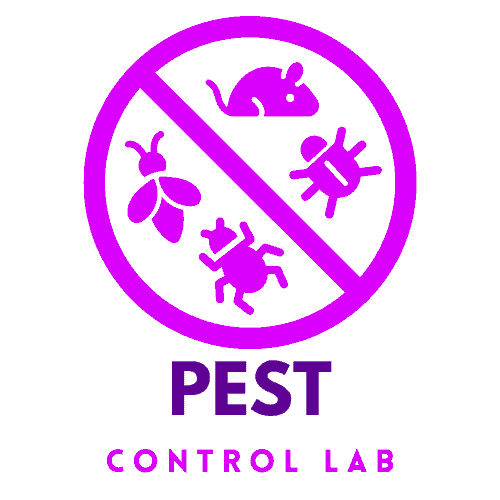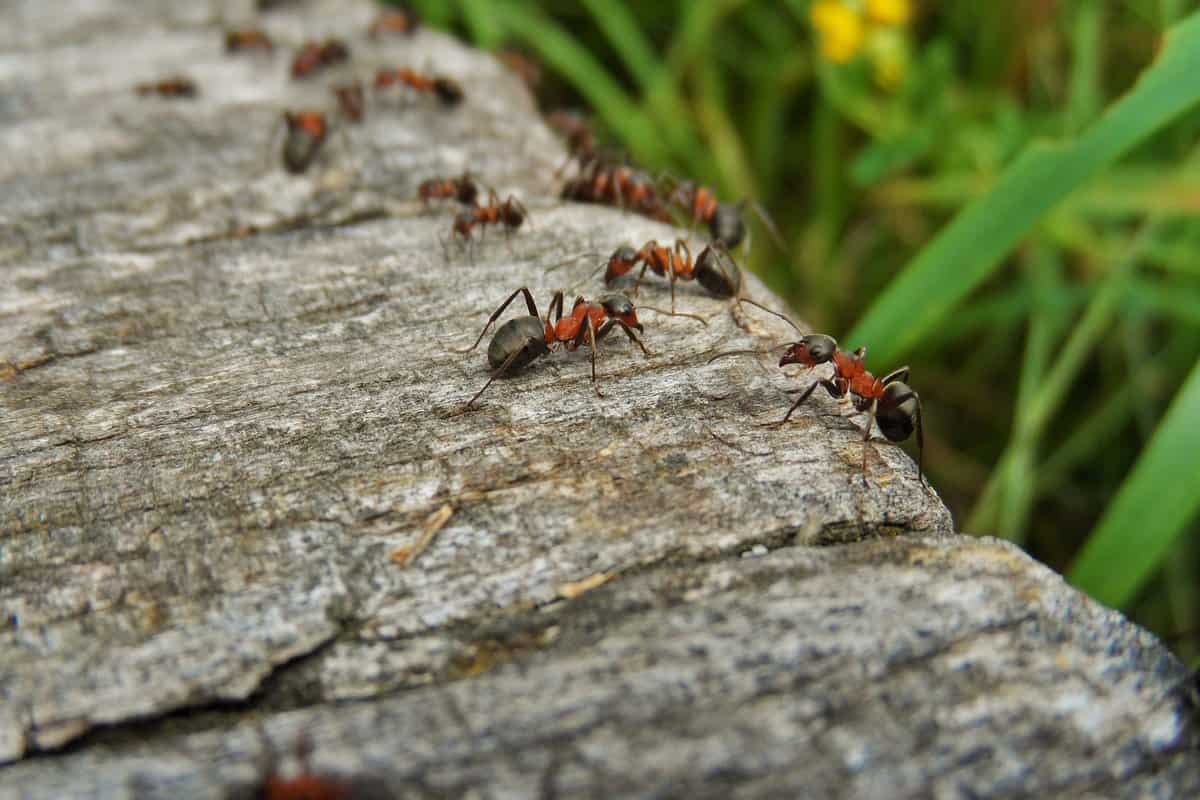Chemical Rodent Control: A Comprehensive Guide
Hey there! Are you tired of uninvited furry guests at home in your space? Rodents can be more than just a nuisance; they pose health risks and can cause significant damage. Fortunately, there are various chemical methods to show these critters the door. From phosphorus paste to calcium cyanide, we will explore the options available in chemical rodent control. So, let’s get started and discover how to keep these pesky intruders at bay.
The World of Chemical Rodent Control: Understanding the Basics

Picture this: You’re enjoying a quiet evening at home when suddenly you hear a scurrying sound. Yep, it’s a rodent, and it’s not alone. Rodents like rats and mice are not just annoying; they can carry diseases and damage your property. But fear not! Understanding the basics of rodent control is your first step to reclaiming your space.
Chemical rodent control methods have been a go-to solution for years. They include a variety of substances, each with its unique way of dealing with these pests. From the potent phosphorus paste to the stealthy calcium cyanide, these chemicals are designed to attract and eliminate rodents. But it’s not just about setting out some bait and hoping for the best. Effective rodent control requires knowing what you’re dealing with, choosing the right chemical, and applying it safely and strategically.
In the following sections, we’ll dive deeper into each chemical method, discussing how it works and its pros and cons. So, stay tuned to become a savvy rodent control
A Chemical Arsenal: From Phosphorus Paste to Calcium Cyanide
Each substance plays a unique role in tackling the rodent problem in the arsenal of chemical rodent control. Let’s dive deeper into each one:
Phosphorus Paste
This substance is like a stealthy spy in rodent control. When mixed with bait, it’s almost irresistible to rodents. But once ingested, it wreaks havoc on their internal systems, leading to a swift end. It’s a popular choice due to its effectiveness, but careful handling and application are crucial to avoid accidental poisoning.
Barium Carbonate Salt
Imagine a silent ninja lurking in the shadows. That’s barium carbonate for you. Mixed with bait, it’s consumed by unsuspecting rodents. Inside their bodies, it causes internal complications leading to their downfall. This method is favored for its effectiveness, especially in agricultural settings, but again, caution is needed to protect other wildlife and pets.
Zinc Phosphide
This chemical is a bit of a shape-shifter, transforming into a lethal gas when it reacts with the acids in a rodent’s stomach. It’s a quick and effective method used in grain storage facilities to protect against rodent infestation. However, its application requires expertise to target only the intended pests.
White Arsenic
A veteran in the game, white arsenic has been used for centuries. It’s a potent substance that requires only a small amount to be effective. But great power comes great responsibility – it’s incredibly toxic to all life forms, so it must be used with the utmost caution and usually only in professional settings.
Thallium Sulfate
This is the sniper’s bullet of rodent control – precise and deadly. Its use has declined due to its high toxicity and risk to the environment and non-target species. It’s a reminder of the balance between effectiveness and safety in pest control.
Strychnine and Strychnine Sulfate
Heavyweights are known for their quick and potent action. They’re used in situations where immediate results are needed. However, their high toxicity level means they must be used judiciously, often as a last resort, and under strict regulations to prevent accidental harm to other animals and humans.
Calcium Cyanide
The final resort in severe infestations, calcium cyanide is like the nuclear option in rodent control. It is highly effective and requires careful handling. Professionals in controlled environments typically use it. Its use is a testament to the seriousness of some rodent infestations and the lengths we go to control them.
In the following sections, we’ll delve into the application techniques for these chemicals and discuss essential safety considerations. It’s not just about eliminating rodents; it’s about doing it responsibly and safely.
Application Techniques and Safety Considerations of Chemical Rodent Control
Deploying chemical rodent control methods is akin to conducting a well-orchestrated symphony – every move must be precise and well-timed. Here’s how to master the art of safe and effective application:
Phosphorus Paste and Barium Carbonate Salt
When using these, think of yourself as a strategist. The key is to mix them with bait that is irresistible to rodents, typically grains or sweet substances. Place the bait strategically where rodent activity is rampant – near holes, along walls, or in dark corners. But remember, the safety of non-target species is paramount. Ensure these baits are inaccessible to pets and children. It’s a delicate balance between being effective and being safe.
Zinc Phosphide
This chemical requires a tactician’s touch. It’s usually applied to grains in storage facilities to prevent rodent infestation. The application needs to be uniform and precise. Protective gear is a must – gloves, masks, and protective clothing. The goal is to protect the grain while ensuring no harm to those applying the chemical.
White Arsenic and Thallium Sulfate
These are typically reserved for professional use due to their extreme toxicity. If they are part of your arsenal, extreme caution is needed. Full protective gear may be necessary, including gloves, masks, and even protective suits. These chemicals should be handled in well-ventilated areas, and any residue must be carefully cleaned to avoid accidental poisoning.
Strychnine and Strychnine Sulfate
These are the heavy hitters and should be used cautiously. If you’re not a professional, it’s advisable to avoid them. Professionals using these substances should employ bait stations to control access and prevent accidental ingestion by non-target species, including birds, pets, and even humans.
Calcium Cyanide
This is the last line of defense in the war against rodents and is not for amateur use. Professional pest control services with the right equipment and expertise should handle its application. If your rodent problem has escalated to a level requiring calcium cyanide, it’s time to call the cavalry – professional pest controllers.
In all cases, respecting the environment is crucial. Avoid contamination of water sources and food supplies. After application, monitor the area for any unintended impacts, such as dead non-target wildlife, and take immediate action if needed.
Finally, educate yourself. Knowledge is power, especially when dealing with potent chemicals. Read the labels, understand the risks, and know the emergency procedures in case of accidental exposure.
By mastering these techniques and respecting safety considerations, you’re not just controlling a pest problem but responsibly and sustainably.
Chemical Rodent Control: Impact on the Environment and Human Health
Remembering that our actions have consequences, especially when dealing with chemicals. Using chemical rodent control methods is like walking a tightrope – effective on one side but potentially hazardous on the other.
Environmental Impact: Chemicals used in rodent control can have unintended ecological effects. They can seep into the soil, contaminate water sources, and affect non-target species, including birds and beneficial insects. It’s a bit like a domino effect – one action sets off a chain of reactions in the ecosystem. Being mindful of this impact is crucial. It’s not just about solving a problem today; it’s about ensuring we don’t create bigger problems for tomorrow.
Human Health Risks: The chemicals we use to control rodents can also harm human health. Accidental ingestion, inhalation, or even skin contact can lead to serious health issues. Think of it as a hidden danger lurking in the shadows. Safe storage, careful application, and proper disposal of these chemicals are vital to prevent harm to us and our loved ones.
The key is to balance effectiveness in rodent control with environmental safety and human health. It’s about being responsible stewards of our planet and protectors of our health. In the following sections, we’ll explore alternatives to chemical methods and the future trends in rodent control.
Alternatives to Chemical Rodent Control
In the quest to outsmart rodents, sometimes turning to nature and technology offers the best solutions. Here’s a closer look at some innovative and environmentally friendly alternatives:
Ultrasonic Devices
Imagine a sound that is irritating to rodents yet entirely inaudible for humans and most pets. That’s the magic of ultrasonic devices. These gadgets emit high-frequency sound waves that are intolerable to rodents, effectively driving them away. It’s a non-invasive method, perfect for those who prefer a more humane approach. However, the effectiveness can vary depending on the environment and the type of rodent.
Natural Predators
It’s like recruiting a team of furry or feathered allies. Cats, certain breeds of dogs, and birds of prey like owls can effectively control rodent populations. It’s a natural cycle of predator and prey playing out right in your backyard. This method is environmentally friendly but requires consideration of the ecological balance and predator welfare.
Sanitation and Exclusion Techniques
Prevention is better than cure. Keeping your area clean and without food scraps can drastically reduce rodent appeal. Seal those cracks, gaps, and openings in walls, doors, and foundations – like building an invisible barrier against these unwanted guests. This method requires consistent effort but is highly effective in the long run.
Traps
Traps come in many shapes and sizes, from classic snap traps to modern, humane versions that allow for catch and release. The key is strategic placement – identifying high-risk rodent areas and setting traps. It’s a bit like a chess game; anticipating your opponent’s moves is crucial. Traps are effective and provide an immediate solution but require regular monitoring and maintenance.
Biological Control
This involves introducing natural enemies or biological agents targeting rodents. It could be a bacteria, virus, or parasite affecting only the rodents. This method is like deploying a microscopic army against rodents. While it’s a fascinating approach, it requires careful planning and understanding of the ecosystem to avoid unintended consequences.
Integrated Pest Management (IPM)
This is a holistic approach, combining various methods like sanitation, exclusion, traps, and sometimes even chemical controls in a targeted, strategic manner. It’s like being a general in a war against rodents – using every tool and tactic to win the battle.
Remember, rodent control aims not just to eliminate pests but to do so in a sustainable and safe way for the environment and non-target species. Each of these alternatives has its place in the rodent control toolkit. The key is understanding your situation and choosing the most effective, sustainable, and humane method.
The Future of Chemical Rodent Control: Innovations and Trends
As we look ahead, the field of rodent control is evolving rapidly, blending technology with ecology to create more innovative, safer methods. Here’s a glimpse into the future:
Digital and High-Tech Solutions: Imagine traps that notify you when they’ve caught a rodent or sensors that track rodent activity and map their movements. We’re entering an era where technology is revolutionizing pest control. These smart devices increase efficiency and reduce the need for harmful chemicals.
Eco-Friendly Chemical Innovations: The trend is shifting towards potent chemicals against rodents that are less harmful to other species and the environment. Research focuses on developing formulas targeting specific rodent biological pathways and minimizing coral damage.
Integrated Pest Management (IPM) Expansion: IPM strategies are gaining popularity, combining various methods in a more holistic, environmentally sensitive approach. It’s about understanding the entire ecosystem and using a combination of biological, physical, and, when necessary, chemical means to control rodent populations.
Public Awareness and Education: An informed public is a powerful tool in rodent control. Increased awareness about sanitation, habitat modification, and responsible chemical use can lead to more effective and sustainable rodent management.
These innovations and trends reflect a growing recognition of the need to balance effective rodent control with environmental responsibility and public health concerns. The future of rodent control looks more intelligent, sustainable, and hopefully, kinder to our planet.
Legal and Regulatory Landscape
Knowing the legal and regulatory landscape in chemical rodent control is as important as knowing your enemy. Here’s a deeper dive into what governs the use of these chemicals:
International and National Regulations
Different countries have varying laws and guidelines regarding rodent control chemicals. For instance, the European Union has stringent regulations on pesticide use, focusing on environmental safety and public health. The Environmental Protection Agency (EPA) regulates pesticides in the United States under the Federal Insecticide, Fungicide, and Rodenticide Act (FIFRA). It’s essential to understand the regulations specific to your region to ensure compliance and effectiveness.
Certification Requirements
In many regions, handling and applying certain rodenticides is restricted to certified professionals. This certification process typically involves training on safe handling, practical application, and understanding the environmental impact of these chemicals. It’s like getting a driver’s license – you must prove you can handle the responsibility before you’re given the keys.
Regular Updates and Changes
Regulatory bodies often update guidelines and policies based on new scientific research and environmental considerations. For instance, certain chemicals that were once widely used may be restricted or banned due to new findings about their environmental or health impacts. Staying updated with these changes is crucial for anyone involved in pest control.
Local Community Guidelines
Apart from national and international regulations, local communities may have their own guidelines and best practices. These can include specific restrictions on chemical use in certain areas, like near schools or water bodies, or procedures for safe disposal of rodenticides. Awareness of these local nuances is essential to ensure that your rodent control efforts are practical and community-friendly.
Reporting and Documentation
Certain rodenticides may sometimes require reporting to regulatory bodies. This documentation helps track the usage and impact of these chemicals, contributing to a broader understanding and management of pest control practices.
Navigating these legal and regulatory aspects is like playing a complex board game – you need to know the rules, play by them, and stay updated as they change. By doing so, you not only ensure effective rodent control but also uphold safety and environmental standards.
Conclusion

And there we have it – a journey through the intricate world of chemical rodent control. From understanding the variety of chemicals available to exploring safer, alternative methods, it’s clear that effective rodent control requires knowledge, caution, and a sense of responsibility. Remember, it’s not just about getting rid of pests; it’s about doing so in a way that respects our health, the environment, and legal guidelines. Armed with this knowledge, you’re better equipped to tackle rodent problems safely and sustainably. Happy (and responsible) rodent controlling!












